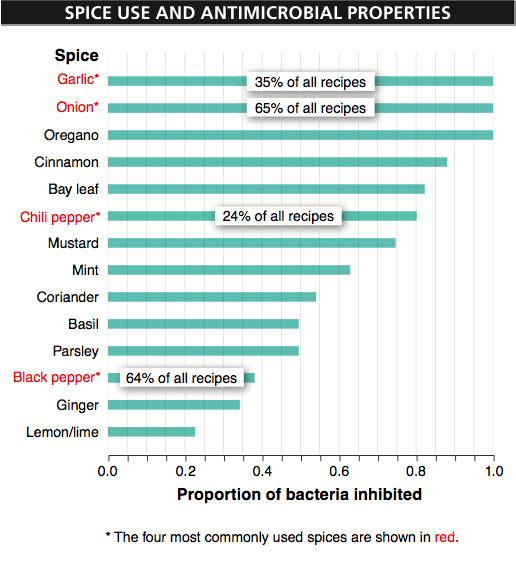
Chapter 22. Chapter 22 Graphic Content
Introduction

Instructions
Review the information provided in the graph to answer each question below.
After submitting your answer, you will be provided feedback to check if your response is correct.
(This activity contains 8 questions.)
1.

1. What feature of the spice is shown on the x-axis? Why does the x-axis only go up to 1.0?
2.

2. Which spice is the second most frequently used in recipes? How do you know this?
3.

3. Why are garlic and onion both at the top of the graph, when garlic is used in only about half as many recipes as onion?
4.

4. What can you conclude about the frequency of recipes that contain oregano? Why?
5.

5. What can you infer about the relative frequency of use of coriander versus ginger in recipes? Why?
6.

6. In a city close to the equator, would you expect fewer food poisoning cases to come from a Swedish restaurant or an Indian restaurant? Why? How certain of your “prediction” are you? Why?
7.

7. What additional data would be helpful in this figure?
8.

8. Propose two alternative ways that you could plot the data included here. What would be an advantage to each of your alternative versions? What would be a disadvantage of each?
Activity results are being submitted...